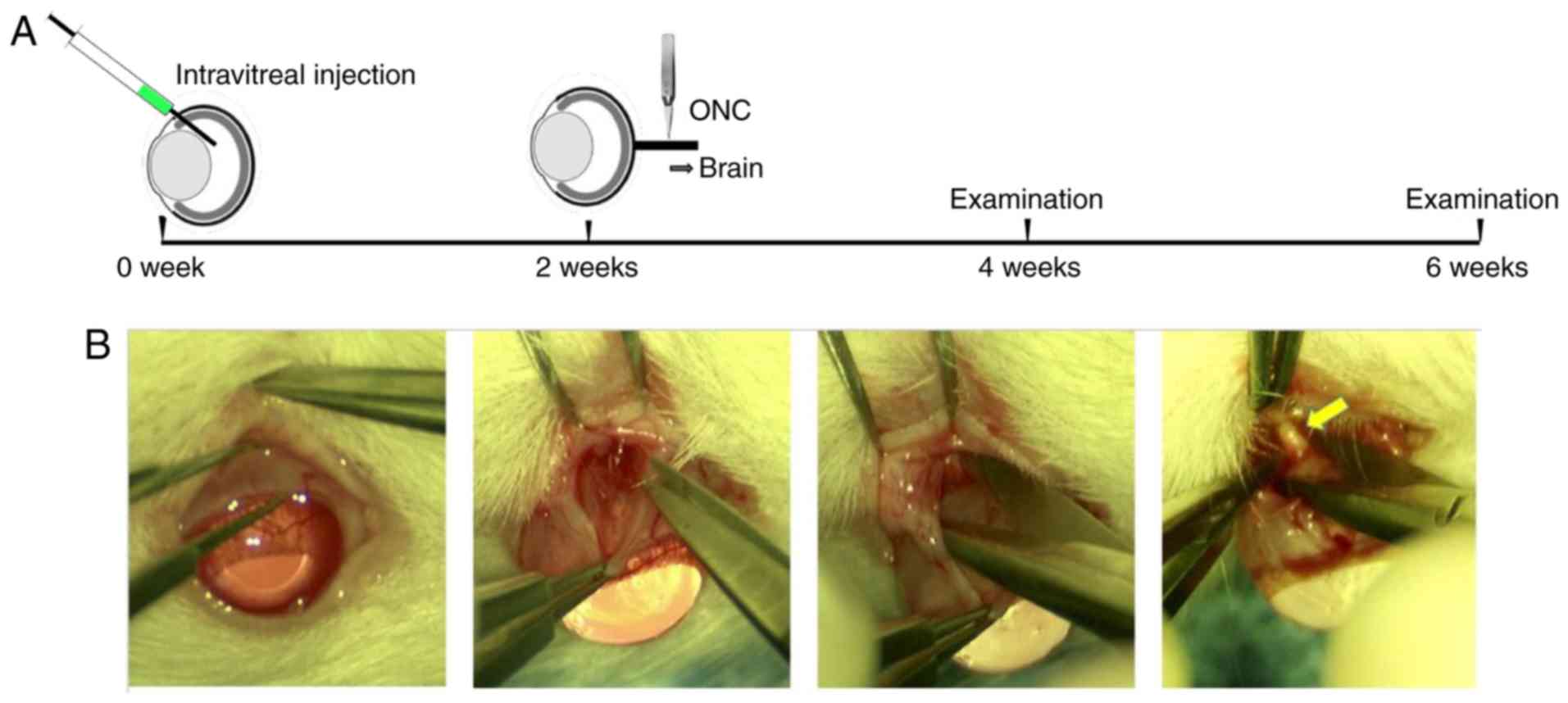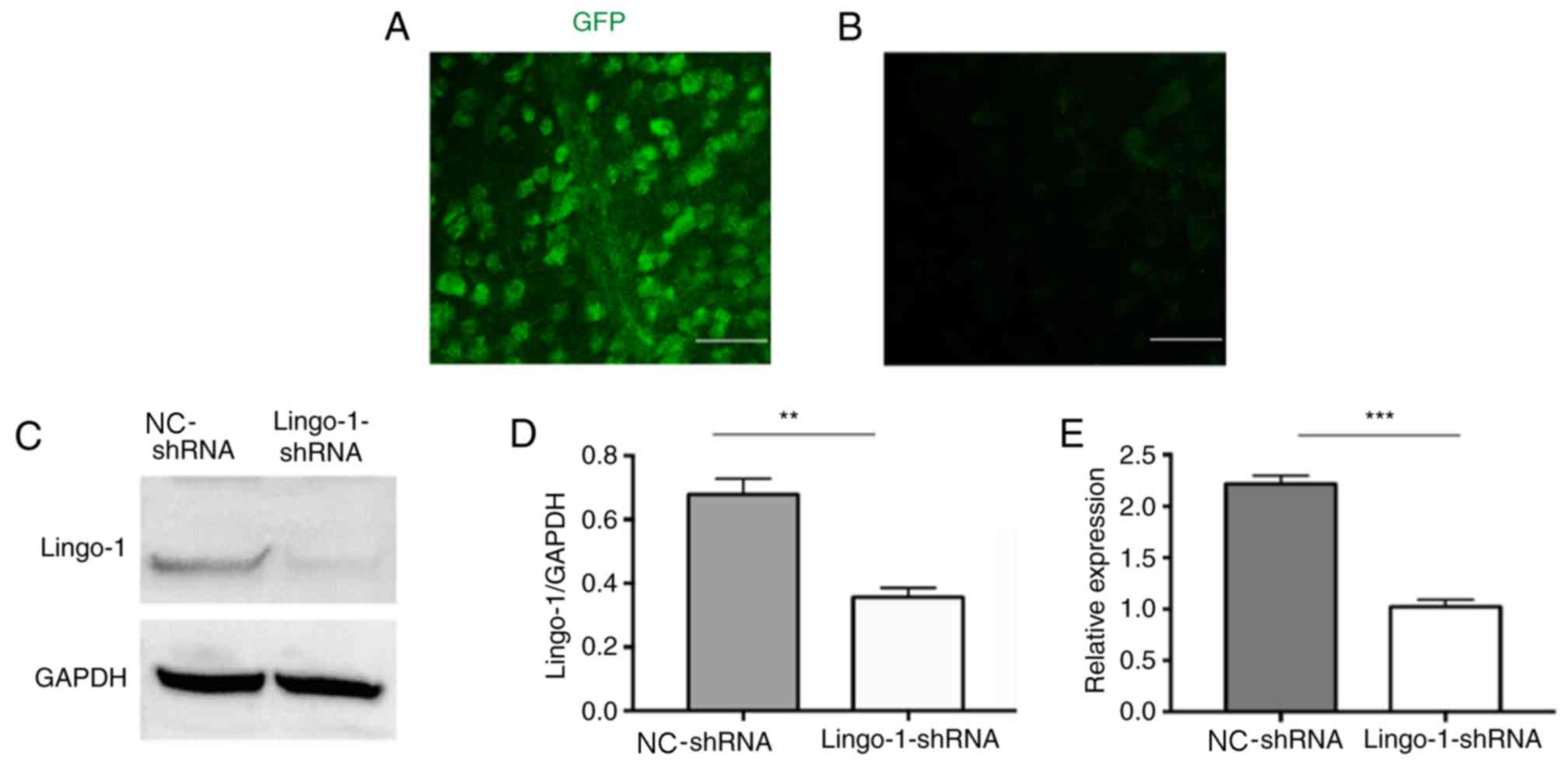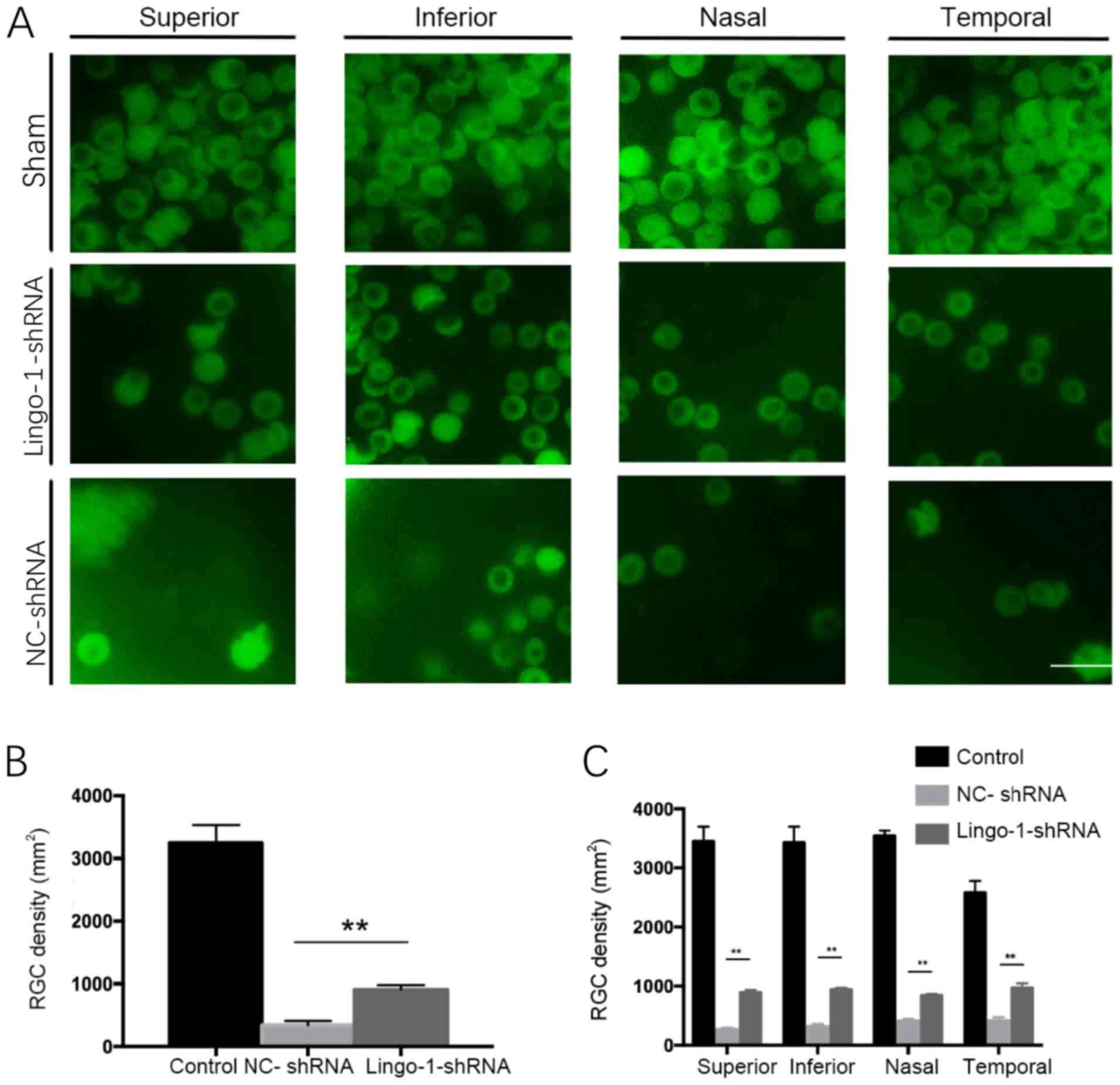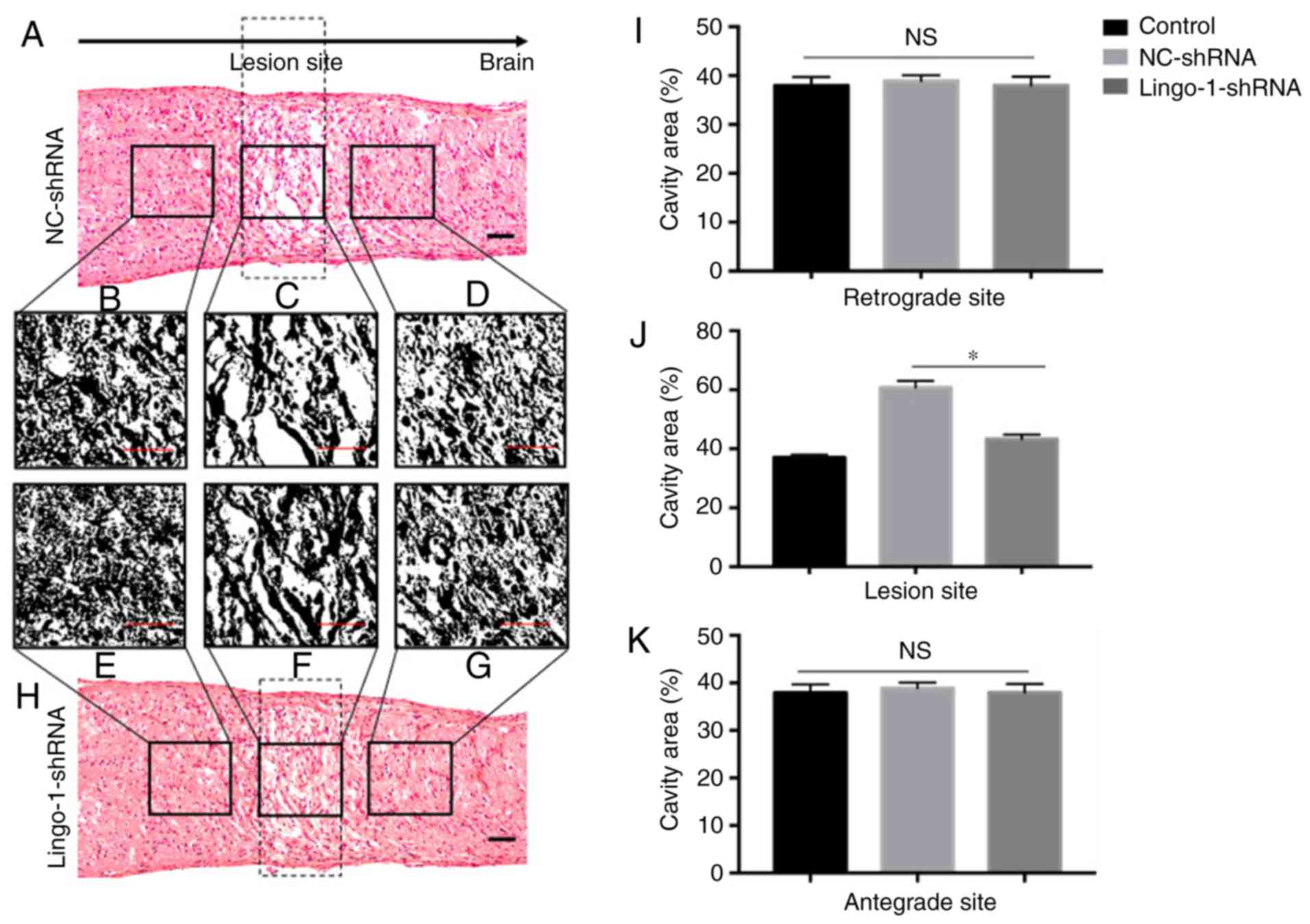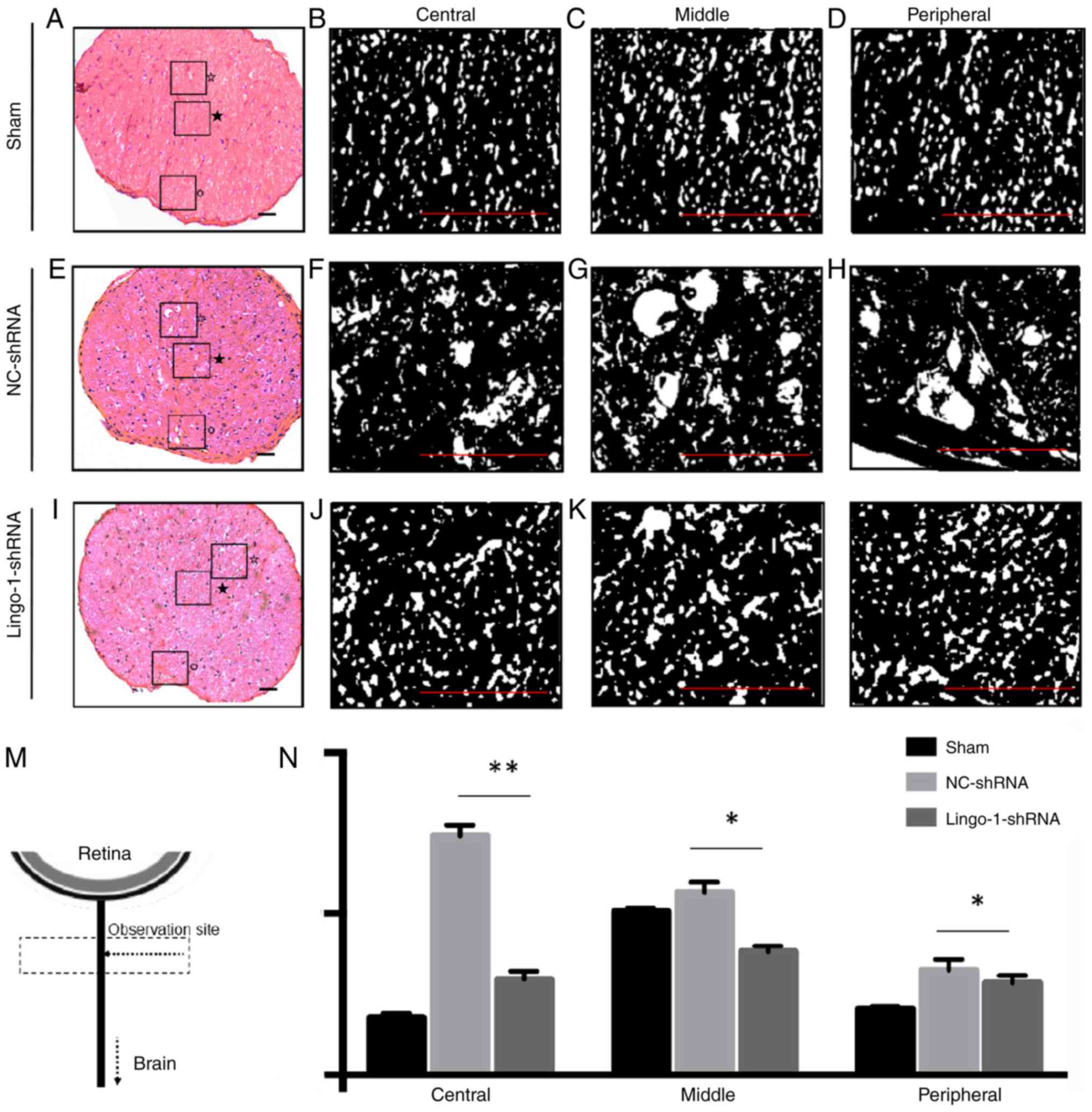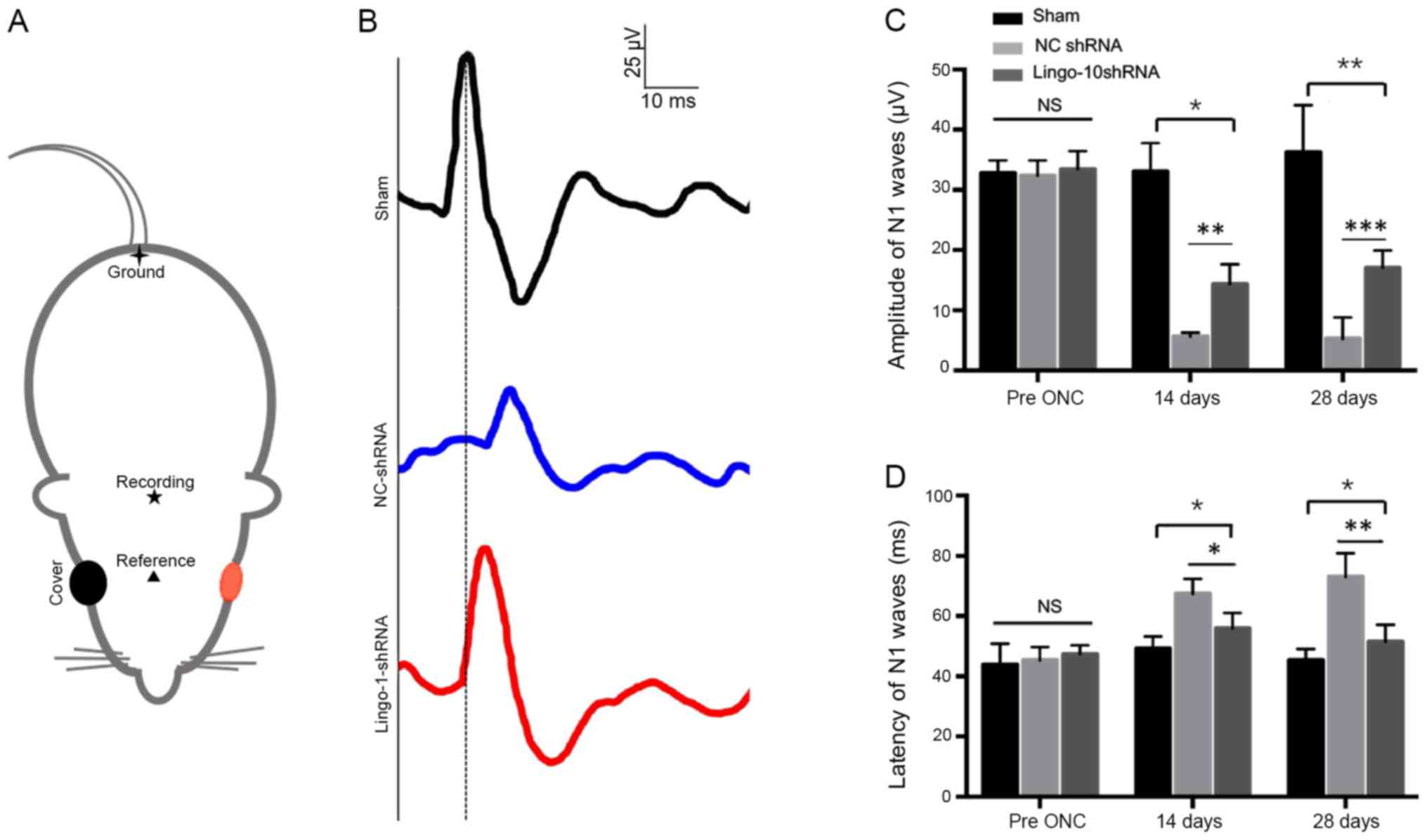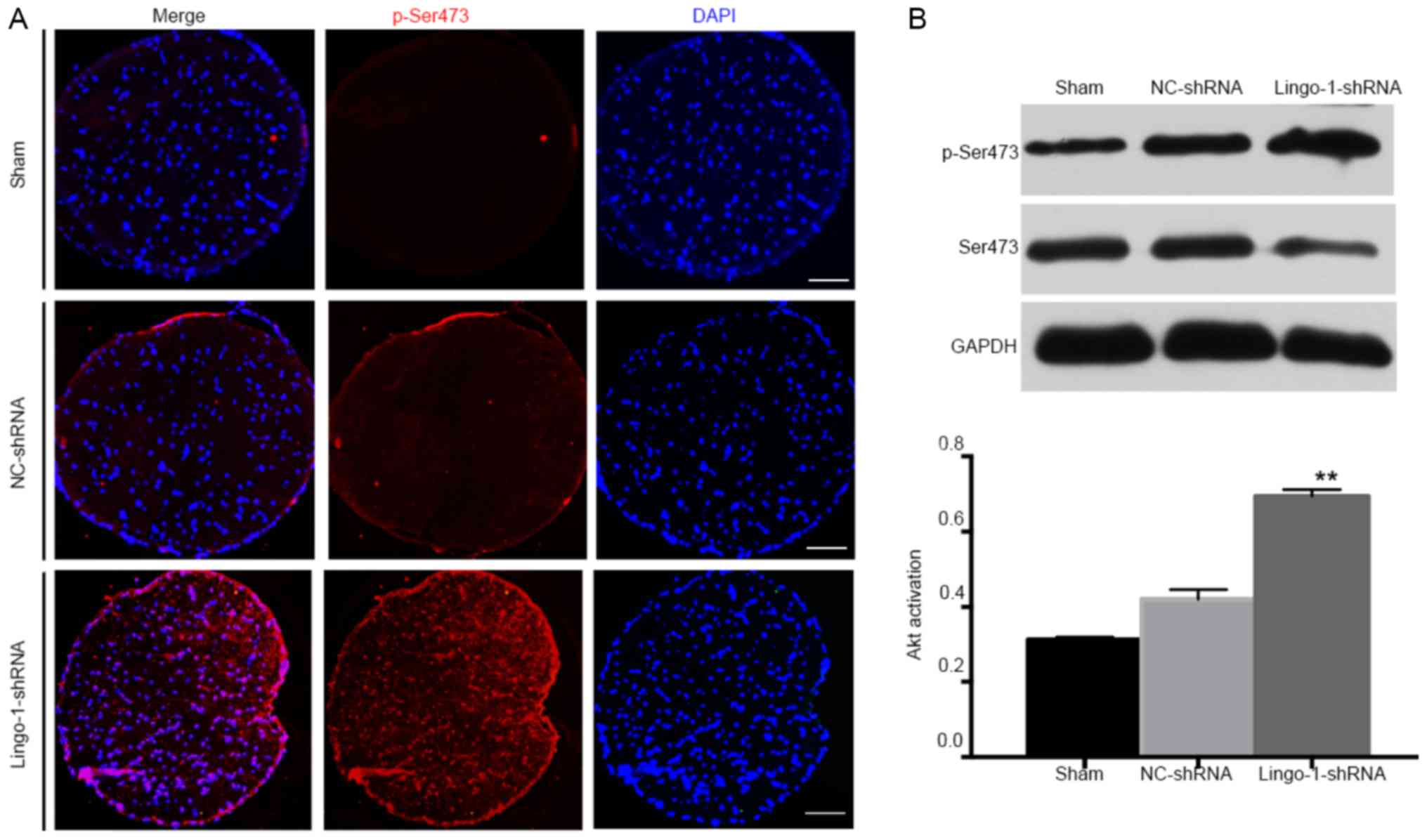|
1
|
Bourne RR, Stevens GA, White RA, Smith JL,
Flaxman SR, Price H, Jonas JB, Keeffe J, Leasher J, Naidoo K, et
al: Causes of vision loss worldwide, 1990–2010: A systematic
analysis. Lancet Glob Health. 1:e339–e349. 2013. View Article : Google Scholar : PubMed/NCBI
|
|
2
|
Jonas JB, Aung T, Bourne RR, Bron AM,
Ritch R and Panda-Jonas S: Glaucoma. Lancet. 390:2183–2193. 2017.
View Article : Google Scholar : PubMed/NCBI
|
|
3
|
Stevens GA, White RA, Flaxman SR, Price H,
Jonas JB, Keeffe J, Leasher J, Naidoo K, Pesudovs K, Resnikoff S,
et al: Global prevalence of vision impairment and blindness:
Magnitude and temporal trends, 1990–2010. Ophthalmology.
120:2377–2384. 2013. View Article : Google Scholar : PubMed/NCBI
|
|
4
|
Dhande OS, Stafford BK, Lim JA and
Huberman AD: Contributions of retinal ganglion cells to subcortical
visual processing and behaviors. Annu Rev Vis Sci. 1:291–328. 2015.
View Article : Google Scholar : PubMed/NCBI
|
|
5
|
Benowitz LI, He Z and Goldberg JL:
Reaching the brain: Advances in optic nerve regeneration. Exp
Neurol. 287:365–373. 2017. View Article : Google Scholar : PubMed/NCBI
|
|
6
|
Park KK, Liu K, Hu Y, Smith PD, Wang C,
Cai B, Xu B, Connolly L, Kramvis I, Sahin M and He Z: Promoting
axon regeneration in the adult CNS by modulation of the PTEN/mTOR
pathway. Science. 322:963–966. 2008. View Article : Google Scholar : PubMed/NCBI
|
|
7
|
Lim JH, Stafford BK, Nguyen PL, Lien BV,
Wang C, Zukor K, He Z and Huberman AD: Neural activity promotes
long-distance, target-specific regeneration of adult retinal axons.
Nat Neurosci. 19:1073–1084. 2016. View
Article : Google Scholar : PubMed/NCBI
|
|
8
|
Liu K, Tedeschi A, Park KK and He Z:
Neuronal intrinsic mechanisms of axon regeneration. Annu Rev
Neurosci. 34:131–152. 2011. View Article : Google Scholar : PubMed/NCBI
|
|
9
|
Andrews JL and Fernandez-Enright F: A
decade from discovery to therapy: Lingo-1, the dark horse in
neurological and psychiatric disorders. Neurosci Biobehav Rev.
56:97–114. 2015. View Article : Google Scholar : PubMed/NCBI
|
|
10
|
Mi S, Lee X, Shao Z, Thill G, Ji B, Relton
J, Levesque M, Allaire N, Perrin S, Sands B, et al: LINGO-1 is a
component of the Nogo-66 receptor/p75 signaling complex. Nat
Neurosci. 7:221–228. 2004. View
Article : Google Scholar : PubMed/NCBI
|
|
11
|
Mi S, Miller RH, Lee X, Scott ML,
Shulag-Morskaya S, Shao Z, Chang J, Thill G, Levesque M, Zhang M,
et al: LINGO-1 negatively regulates myelination by
oligodendrocytes. Nat Neurosci. 8:745–751. 2005. View Article : Google Scholar : PubMed/NCBI
|
|
12
|
Mi S, Pepinsky RB and Cadavid D: Blocking
LINGO-1 as a therapy to promote CNS repair: From concept to the
clinic. CNS Drugs. 27:493–503. 2013. View Article : Google Scholar : PubMed/NCBI
|
|
13
|
Rex TS, Allocca M, Domenici L, Surace EM,
Maguire AM, Lyubarsky A, Cellerino A, Bennett J and Auricchio A:
Systemic but not intraocular Epo gene transfer protects the retina
from light-and genetic-induced degeneration. Mol Ther. 10:855–861.
2004. View Article : Google Scholar : PubMed/NCBI
|
|
14
|
Fu QL, Hu B, Wu W, Pepinsky RB, Mi S and
So KF: Blocking LINGO-1 function promotes retinal ganglion cell
survival following ocular hypertension and optic nerve transection.
Invest Ophthalmol Vis Sci. 49:975–985. 2008. View Article : Google Scholar : PubMed/NCBI
|
|
15
|
Inoue H, Lin L, Lee X, Shao Z, Mendes S,
Snodgrass-Belt P, Sweigard H, Engber T, Pepinsky B, Yang L, et al:
Inhibition of the leucine-rich repeat protein LINGO-1 enhances
survival, structure, and function of dopaminergic neurons in
Parkinson's disease models. Proc Natl Acad Sci USA.
104:14430–14435. 2007. View Article : Google Scholar : PubMed/NCBI
|
|
16
|
Fu QL, Hu B, Li X, Shao Z, Shi JB, Wu W,
So KF and Mi S: LINGO-1 negatively regulates TrkB phosphorylation
after ocular hypertension. Eur J Neurosci. 31:1091–1097. 2010.
View Article : Google Scholar : PubMed/NCBI
|
|
17
|
Fu QL, Li X, Yip HK, Shao Z, Wu W, Mi S
and So KF: Combined effect of brain-derived neurotrophic factor and
LINGO-1 fusion protein on long-term survival of retinal ganglion
cells in chronic glaucoma. Neuroscience. 162:375–382. 2009.
View Article : Google Scholar : PubMed/NCBI
|
|
18
|
Kwon HS, Nakaya N, Abu-Asab M, Kim HS and
Tomarev SI: Myocilin is involved in NgR1/Lingo-1-mediated
oligodendrocyte differentiation and myelination of the optic nerve.
J Neurosci. 34:5539–5551. 2014. View Article : Google Scholar : PubMed/NCBI
|
|
19
|
Chen N, Cen JS, Wang J, Qin G, Long L,
Wang L, Wei F, Xiang Q, Deng DY and Wan Y: Targeted inhibition of
leucine-rich repeat and immunoglobulin domain-containing protein 1
in transplanted neural stem cells promotes neuronal differentiation
and functional recovery in rats subjected to spinal cord injury.
Crit Care Med. 44:e146–e157. 2016. View Article : Google Scholar : PubMed/NCBI
|
|
20
|
Mi S, Hu B, Hahm K, Luo Y, Kam Hui ES,
Yuan Q, Wong WM, Wang L, Su H, Chu TH, et al: LINGO-1 antagonist
promotes spinal cord remyelination and axonal integrity in
MOG-induced experimental autoimmune encephalomyelitis. Nat Med.
13:1228–1233. 2007. View
Article : Google Scholar : PubMed/NCBI
|
|
21
|
Li Y, Andereggen L, Yuki K, Omura K, Yin
Y, Gilbert HY, Erdogan B, Asdourian MS, Shrock C, de Lima S, et al:
Mobile zinc increases rapidly in the retina after optic nerve
injury and regulates ganglion cell survival and optic nerve
regeneration. Proc Natl Acad Sci USA. 114:E209–E218. 2017.
View Article : Google Scholar : PubMed/NCBI
|
|
22
|
Qu J, Wang D and Grosskreutz CL:
Mechanisms of retinal ganglion cell injury and defense in glaucoma.
Exp Eye Res. 91:48–53. 2010. View Article : Google Scholar : PubMed/NCBI
|
|
23
|
Shaw PX, Sang A, Wang Y, Ho D, Douglas C,
Dia L and Goldberg JL: Topical administration of a Rock/Net
inhibitor promotes retinal ganglion cell survival and axon
regeneration after optic nerve injury. Exp Eye Res. 158:33–42.
2017. View Article : Google Scholar : PubMed/NCBI
|
|
24
|
Trost A, Bruckner D, Kaser-Eichberger A,
Motloch K, Bogner B, Runge C, Strohmaier C, Couillard-Despres S,
Reitsamer HA and Schroedl F: Lymphatic and vascular markers in an
optic nerve crush model in rat. Exp Eye Res. 159:30–39. 2017.
View Article : Google Scholar : PubMed/NCBI
|
|
25
|
McKinnon SJ, Schlamp CL and Nickells RW:
Mouse models of retinal ganglion cell death and glaucoma. Exp Eye
Res. 88:816–824. 2009. View Article : Google Scholar : PubMed/NCBI
|
|
26
|
Wu HF, Cen JS, Zhong Q, Chen L, Wang J,
Deng DY and Wan Y: The promotion of functional recovery and nerve
regeneration after spinal cord injury by lentiviral vectors
encoding Lingo-1 shRNA delivered by Pluronic F-127. Biomaterials.
34:1686–1700. 2013. View Article : Google Scholar : PubMed/NCBI
|
|
27
|
Huberman AD, Manu M, Koch SM, Susman MW,
Lutz AB, Ullian EM, Baccus SA and Barres BA: Architecture and
activity-mediated refinement of axonal projections from a mosaic of
genetically identified retinal ganglion cells. Neuron. 59:425–438.
2008. View Article : Google Scholar : PubMed/NCBI
|
|
28
|
Pernet V and Schwab ME: Lost in the
jungle: New hurdles for optic nerve axon regeneration. Trends
Neurosci. 37:381–387. 2014. View Article : Google Scholar : PubMed/NCBI
|
|
29
|
Cen LP, Liang JJ, Chen JH, Harvey AR, Ng
TK, Zhang M, Pang CP, Cui Q and Fan YM: AAV-mediated transfer of
RhoA shRNA and CNTF promotes retinal ganglion cell survival and
axon regeneration. Neuroscience. 343:472–482. 2017. View Article : Google Scholar : PubMed/NCBI
|
|
30
|
Wang R, Sun Q, Xia F, Chen Z, Wu J, Zhang
Y, Xu J and Liu L: Methane rescues retinal ganglion cells and
limits retinal mitochondrial dysfunction following optic nerve
crush. Exp Eye Res. 159:49–57. 2017. View Article : Google Scholar : PubMed/NCBI
|
|
31
|
Rodriguez AR, de Sevilla Müller LP and
Brecha NC: The RNA binding protein RBPMS is a selective marker of
ganglion cells in the mammalian retina. J Comp Neurol.
522:1411–1443. 2014. View Article : Google Scholar : PubMed/NCBI
|
|
32
|
Livak KJ and Schmittgen TD: Analysis of
relative gene expression data using real-time quantitative PCR and
the 2(-Delta Delta C(T)) method. Methods. 25:402–408. 2001.
View Article : Google Scholar : PubMed/NCBI
|
|
33
|
Ahn JY: Neuroprotection signaling of
nuclear akt in neuronal cells. Exp Neurobiol. 23:200–206. 2014.
View Article : Google Scholar : PubMed/NCBI
|
|
34
|
Crair MC and Mason CA: Reconnecting eye to
brain. J Neurosci. 36:10707–10722. 2016. View Article : Google Scholar : PubMed/NCBI
|
|
35
|
Kwon OJ, Lee ES and Jeon CJ: Density and
types of calretinin-containing retinal ganglion cells in rabbit.
Neuroscience. 278:343–353. 2014. View Article : Google Scholar : PubMed/NCBI
|
|
36
|
Groh A, Meyer HS, Schmidt EF, Heintz N,
Sakmann B and Krieger P: Cell-type specific properties of pyramidal
neurons in neocortex underlying a layout that is modifiable
depending on the cortical area. Cereb Cortex. 20:826–836. 2010.
View Article : Google Scholar : PubMed/NCBI
|
|
37
|
Gennarelli TA, Thibault LE, Tipperman R,
Tomei G, Sergot R, Brown M, Maxwell WL, Graham DI, Adams JH, Irvine
A, et al: Axonal injury in the optic nerve: A model simulating
diffuse axonal injury in the brain. J Neurosurg. 71:244–253. 1989.
View Article : Google Scholar : PubMed/NCBI
|
|
38
|
Zhao H, Sapolsky RM and Steinberg GK:
Phosphoinositide- 3-kinase/akt survival signal pathways are
implicated in neuronal survival after stroke. Mol Neurobiol.
34:249–270. 2006. View Article : Google Scholar : PubMed/NCBI
|
|
39
|
Mosyak L, Wood A, Dwyer B, Buddha M,
Johnson M, Aulabaugh A, Zhong X, Presman E, Benard S, Kelleher K,
et al: The structure of the Lingo-1 ectodomain, a module implicated
in central nervous system repair inhibition. J Biol Chem.
281:36378–36390. 2006. View Article : Google Scholar : PubMed/NCBI
|
|
40
|
Bei F, Lee HHC, Liu X, Gunner G, Jin H, Ma
L, Wang C, Hou L, Hensch TK, Frank E, et al: Restoration of visual
function by enhancing conduction in regenerated axons. Cell.
164:219–232. 2016. View Article : Google Scholar : PubMed/NCBI
|
|
41
|
Wilson AM and Di Polo A: Gene therapy for
retinal ganglion cell neuroprotection in glaucoma. Gene Ther.
19:127–136. 2012. View Article : Google Scholar : PubMed/NCBI
|
|
42
|
Pezet S, Spyropoulos A, Williams RJ and
McMahon SB: Activity-dependent phosphorylation of Akt/PKB in adult
DRG neurons. Eur J Neurosci. 21:1785–1797. 2005. View Article : Google Scholar : PubMed/NCBI
|
|
43
|
Alessi DR, Andjelkovic M, Caudwell B, Cron
P, Morrice N, Cohen P and Hemmings BA: Mechanism of activation of
protein kinase B by insulin and IGF-1. EMBO J. 15:6541–6551. 1996.
View Article : Google Scholar : PubMed/NCBI
|
|
44
|
Martin KRG, Quigley HA, Zack DJ,
Levkovitch-Verbin H, Kielczewski J, Valenta D, Baumrind L, Pease
ME, Klein RL and Hauswirth WW: Gene therapy with brain-derived
neurotrophic factor as a protection: Retinal ganglion cells in a
rat glaucoma model. Invest Ophthalmol Vis Sci. 44:4357–4365. 2003.
View Article : Google Scholar : PubMed/NCBI
|















